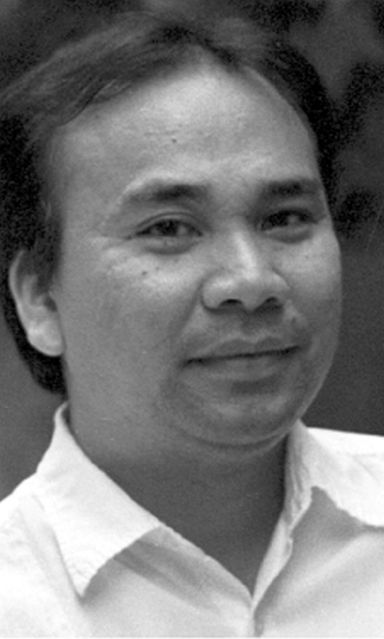Chinese and Muslim settlements in pre-colonial Cebu?

BERSALES
The recent soft opening of the Rosita Rodriguez Arcenas Gallery of Chinese and Southeast Asian Ceramics at the University of San Carlos Museum occasioned a rekindling of questions whether there was a thriving Chinese settlement in Cebu even before the ill-fated Magellan expedition arrived in 1521. Apropos to this is whether Humabon or Lapu-Lapu were Muslims.
Before I delve into this, let me invite the public to view this large collection of ceramics that date from the Song Dynasty (ca. 11th century) up to the Qing Dynasty (ca. 19th century).
There are also beautiful and rare pieces from Thai and Vietnamese ceramic production centers of the 14th–15th centuries, which took over the trade in ceramics during the so-called Ming Gap, a period when the early Ming rulers closed China from the world.
The Arcenas collection is both a magnificent treasure trove and a reference for both the curious and the serious scholar of tradeware ceramics, and USC Museum (Tel. 253 1000 loc. 191) is extremely lucky to host it.
Now, let us return to the issue at hand.
The answer is a resounding no.
One need not go further than read the report of Antonio Pigafetta, the chronicler of the Magellan expedition, to get the answer.
First, Pigafetta does not report the presence of a Chinese settlement but in fact mentions that a Thai (Siamese) trading boat left Sugbu three days before the expedition arrived.
Pigafetta was clearly not ignorant of Chinese ceramics as he describes Humabon drinking “tuba” from porcelain jars with the use of bamboo reeds.
Had there been Chinese individuals permanently living in Sugbu at the time, it would have merited a mention in Pigafetta’s chronicle as he, in fact, delves on so many things about Cebuanos, even including penis pins and how they were used, which he marveled at.
On the issue of Muslims, Pigafetta mentions that Humabon had a Mohameddan (another term for Muslim at the time) in his court.
I have written about this previously and will reiterate it here: Pigafetta would not have singled out this so-called Mohameddan if the Sugbu settlement of Humabon were a Muslim enclave.
He would have mentioned that everyone was Muslim and his glossary would have reflected words to that effect.
Neither did Pigafetta mention that Lapu-Lapu was a Muslim or that he came from elsewhere other than Matan or Mactan.
Therefore, all those allusions to Lapu-Lapu being a caliph are, as far as the historical records say, baloney.
And so, the name of a café or restaurant in a heritage hotel of sorts purporting to Lapu-Lapu’s mother having come from faraway Sumatra is also patently erroneous and should be immediately corrected.
The source of this and other stories is at best suspect and at worse insulting to Cebuano or Mactanese (for want of a term) sensibilities. For our ancestors did not need someone from faraway Borneo or Sumatra to fight for them. Lapu-Lapu was Mactan’s very own!
Having said this, it is also impossible to imagine a Chinese settlement in Sugbu; otherwise, Humabon would have lost his preeminent position as chief of a “taboan,” a seasonal market of sorts where everyone from the outlying islands met to trade their goods for imported ceramics.
With a Chinese settlement in existence nearby, what is the need for Humabon to control the trade? All the consignees (“mga tiga-angkat”) from all over the Visayas would logically bypass him and go directly to the Chinese.
Like all merchants, the Chinese went where there was a thriving and regular market.
In Sugbu, the Chinese were itinerant merchants, coming over with the favorable winds to consign their goods to Muslim and other traders the way DVDs reach even the remotest uplands today.
At the next favorable wind, the same Chinese merchants would come back to collect their dues. Ergo, no need to settle down permanently as there was no need to carry out the trade directly.
The Parian (first in Manila and later in Cebu) happened only during the period of intense trading amidst a large settlement where other support services from Chinese individuals of various trades and persuasions (not just selling ceramics) were needed. Obviously, Humabon did not need Chinese tailors, shoemakers, or stone builders, carvers and even the occasional Chinese earwax picker in the manner of the thriving Manila Parian of the 1590s onward.
The main culprit that brought about thriving Chinese settlements, first in Manila, was the lucrative Galleon Trade that brought Chinese ceramics, silk and other goods to the New World in return for silver, which the Chinese considered more valuable than gold at the time.
The Spanish settlement in Manila survived and thrived because of Chinese settlers who were adept at all forms of skills: building stone and wooden houses; making bricks and tile roofs; cutting and coiffing hair; carving ivory and wood into holy images; cooking and selling pancit, humba, patis, balut, tuyo, etc.
Cebu’s turn would come much later, especially since, after the Galleon Trade started, even the Spaniards (except for a handful of officials and missionaries) all but abandoned the island in favor of Manila.
And so to say that Chinese ceramics found in Cebuano burials implies the presence of Chinese settlements is like saying that Volkswagens on the streets means there are Germans living all over the place, to paraphrase the famous historian William Henry Scott. (Many thanks Gavin Sanson Bagares for pointing this out, by the way, and for our lively conversations about dispelling myths like this).
Disclaimer: The comments uploaded on this site do not necessarily represent or reflect the views of management and owner of Cebudailynews. We reserve the right to exclude comments that we deem to be inconsistent with our editorial standards.
